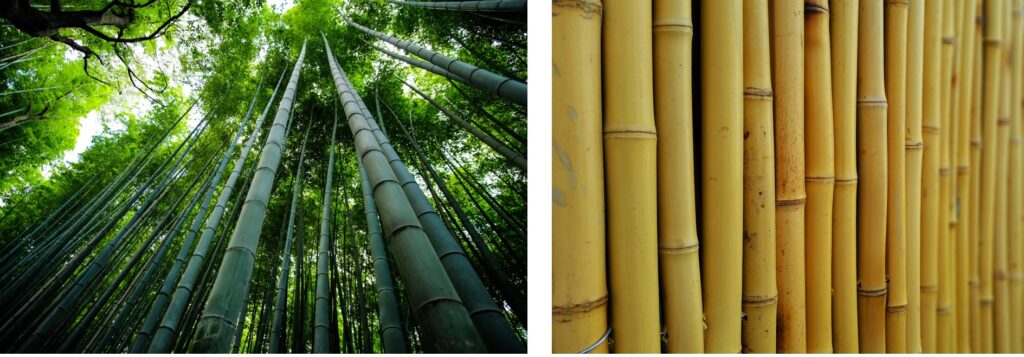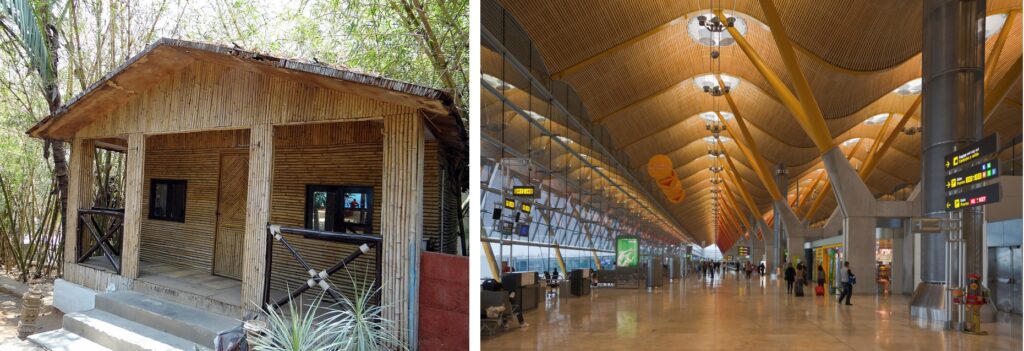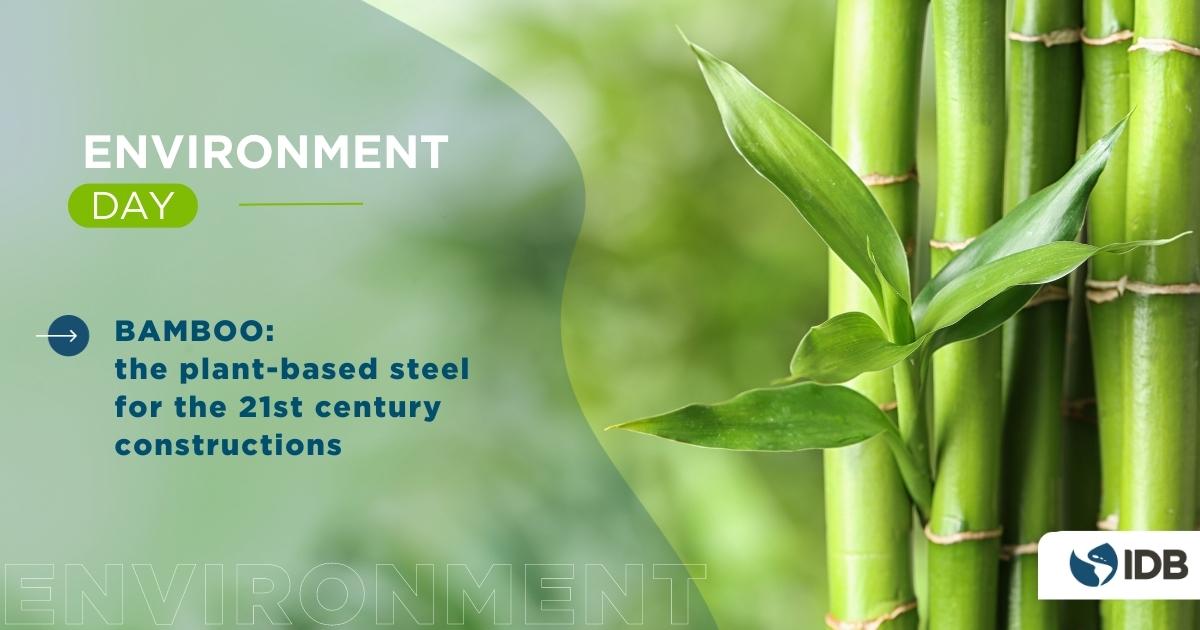Este artículo está también disponible en / This post is also available in: Spanish
It is lighter than steel, but five times stronger than concrete. Bamboo could be considered a gift from nature for construction because of its low cost, sustainability, abundance and strenght. Its use in the construction sector in Latin America and the Caribbean (LAC) has gained increasing popularity in recent years due to its numerous environmental, economic and social advantages.
Bamboo, a fast-growing and renewable plant, has proven to be a sustainable and viable alternative to other conventional materials in building construction. In this article, on the ocassion of World Environment Day, we invite you to learn why bamboo is gaining popularity in the region and why many consider it the construction material of choice for the 21st century.
Benefits of bamboo as a building construction material
Bamboo is found almost everywhere on the planet and grows naturally in LAC. It has been used for centuries in our region by indigenous communities for a variety of purposes, including housing construction. However, its potential as a building material has been underestimated until recently. As awareness grows about the importance of adapting our buildings to mitigate the effects caused by climate change, as well as reducing the environmental impact of the construction industry, bamboo has emerged as a promising option for the region’s future.

Would you like to know some of the main benefits of this material?
1. Rapid growth:
One of the main advantages of bamboo is its rapid cultivation and growth. Some bamboo species can grow up to one meter per day, making it one of the fastest growing plants in the world. This means that bamboo is a renewable and readily available resource, reducing dependence on less sustainable building materials and deforestation of natural forests.
2. Strength and durability:
Bamboo is also a very strong and durable material. Although it may appear fragile due to its appearance, this plant has a high tensile strength, which makes it suitable for supporting structural loads. Compared to wood, bamboo has a higher bending strength, making it an ideal material for roofs and beams, especially in areas with high seismic levels.
3. Low cost:
Another advantage of bamboo is its low cost compared to other building materials. In many rural areas of LAC, bamboo grows wild and can be harvested sustainably, which reduces procurement costs. In addition, the labor required to work with bamboo is also less compared to other materials, thus saving on construction costs.
4. Social benefits:
The use of bamboo in construction also has significant social benefits. Many rural communities in LAC depend on agriculture for their livelihoods. By promoting the cultivation and use of bamboo, a new source of income is created for these communities, improving their quality of life and generating local employment opportunities.
Are there any bamboo buildings in Latin America and the Caribbean?
The use of bamboo as a building material is widespread, especially in Asia. However, although its use is not yet widespread in LAC, there are examples of innovative architectural projects in countries such as Colombia, Ecuador, Costa Rica and Mexico. For example, in Ecuador, 220 social housing units will be built this year using bamboo structures, which will favor access to safe and sustainable housing for low-income communities. In Colombia, as we reported in this article on the Mallorquin swamp, Barranquilla is working, with IDB support, on the construction of an eco-park that will include pavilions made of bamboo.
Challenges and opportunities for encouraging the use of bamboo as a building material in Latin America and the Caribbean
Despite its undoubted advantages, the use of bamboo in construction still faces some challenges in the region. One of them is the lack of quality standards and certification for bamboo as a structural material. There are building codes that regulate the use of traditional materials such as steel and concrete. Therefore, it would be important to establish regulations and technical standards to guarantee the safety and durability of bamboo structures.

Left: house built with bamboo | Right: Terminal 4 of the Adolfo Suarez Madrid Barajas airport, with bamboo roof.
In addition, further research and development of bamboo preservation techniques is required to increase bamboo’s resistance to fire, insects and fungi. This will ensure that bamboo structures are durable and can withstand adverse environmental conditions in the long term.
In conclusion, despite the existing challenges, bamboo is poised to be one of the most valuable carbon neutral and locally adapted materials for building construction in our region. This year, the IDB’s Housing and Urban Development Division will publish a monograph on these types of materials, with a special mention of bamboo. If you don’t want to miss its launch, we recommend that you sign up for our newsletter and you will receive monthly blog posts, invitations to events and publications from our Division.


Leave a Reply